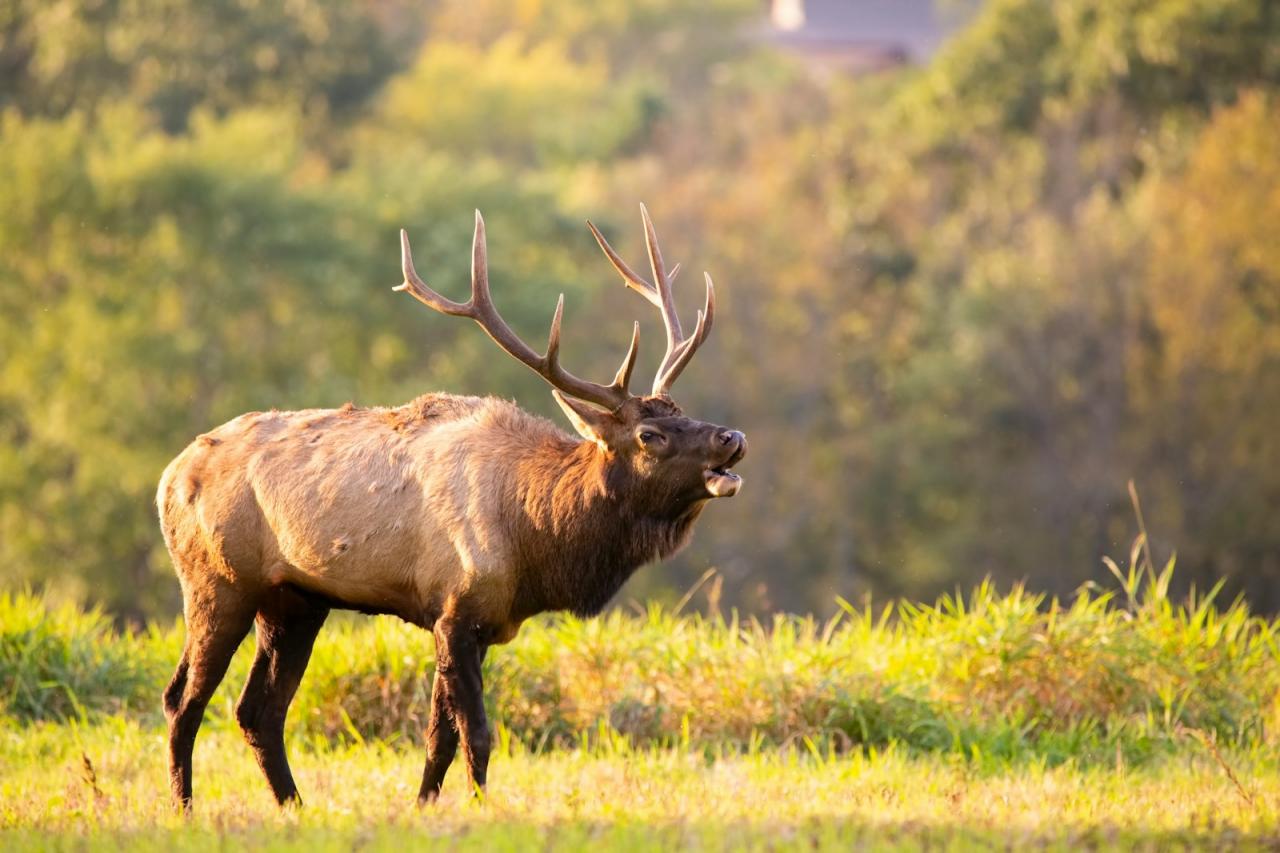
Whether you are an elk hunting pro or a first-timer, there are certain guidelines that you should always be following. Prior to diving into the guidelines of hunting elk, there are a few things you need to iron out ahead of time.
First, you need to know if you are elk hunting with friends or joining an outfitter. If you are going with an outfitter make sure he or she is licensed which you can verify by calling the state wildlife agency. You also need to have carcass transportation taken care of, in case you do take down an elk.
When to Hunt
The timing of your elk hunt can be extremely important to the success or failure of the hunt. Unfortunately most firearms seasons open mid-October which is just after peak breeding season. Bulls won’t be bugling anymore and instead remain silent. When general firearms season opens, it also means that herds of hunters will be entering the woods, along with you.
Some of the best elk hunting can be done in late November if you’re willing to stick it out through the cold. While not every state offers hunts this late, some draw permits through a lottery system.
The reason late November is a good time to hunt is due to the same reason some hunters want to stay indoors. The weather, along with heavy snows, can drive bulls from their higher-elevated homes into the lower areas. They can still forage in these areas, providing you with a chance to tag a large bull.
Find the Food Source
Sometimes it is easier for the game to come to you. Instead of exhausting yourself hiking to where the elk can be located, you can instead locate the food source that they will be hiking to. If you’re not moving, there is a less likely chance that you will be the one to spook them.
Finding the food source can be paramount to your success simply because of how sparse and spread out it can be in an elk’s environment. However, in the lower terrain, elk will find concentrated fields of food. Large numbers of elk will congregate in these fields leaving behind clues that they were there.
Mind the Lead Cow
Elk are a matriarchal species. Often times, large herd bulls can act like mind-dead followers. However, the cow that leads the line will not make mistakes. If you end up spooking the lead cow, you can expect to use the following days searching for elk. You may even spook them so far as to drive the herd onto someone’s private hunting property, where you no longer can legally hunt. In contrast you might be able to get away with spooking a spike or calf because they don’t command the same attention as the lead cow.
Cow Calling
There are two different ways to call elk: bugling and cow calling. Bugling has become a controversial practice. Most elk have become accustomed to hearing all sorts of bugles which have forced them to be hesitant when they hear it.
Cow calling, on the other hand, is very important. During breeding season a cow call can bring both herd and solo bulls to you who would otherwise be resistant to a bugle call. The bugle call can be intimidating to solo bulls and often ward off bulls with a harem.
You’ll want to walk and cow call at the same time to create the effect that you are a cow and not a hunter.
Elk Shot Placement
There are five placement shots that elk hunters typically use. The five placements are broadside, quartering away, quartering toward, head-on, and rear-end. In general, the best placement for a shot is the broadside shot. The quartering away shot is another good shot for firearm hunters, however is not ideal for bow hunters.
Bow hunters should try to wait it out and shoot for a broadside shot. Rear-end shots are not recommended as they usually won’t bring down the elk.
Broadside – This is the ideal shot for both rifle and bow hunters. This requires the least amount of penetration to hit a vital organ. The ideal location is behind the shoulder of the front leg. Your goal is to hit both lungs and the heart.
Quartering Away – This shot is no longer ideal for bow hunters but still a good shot for firearm hunters. For bow hunters, if you plan to take this type of shot, the best are to aim for is the far front leg about one third of the way up the body cavity. Again, the goal is to hit the lungs while avoiding as much intestinal tract as possible.
Quartering Toward – This is probably the worst shot a bow hunter can take. Avoid taking this shot as it will likely miss most vital organs. Hunter’s using a rifle can take this show, however firearm hunters using a muzzle loader also generally struggle with this shot.
Head-On – Another shot for bow hunters to avoid as the vital organs are protected by bone. Firearm hunters can potentially bring down an elk from this shot if they hit the neck area just below the chin and center of the chest.
Read-End – There really is no benefit to taking this shot. The only way to bring down an elk from this placement is to hit the extremely thin femoral artery which is protected by bones.


